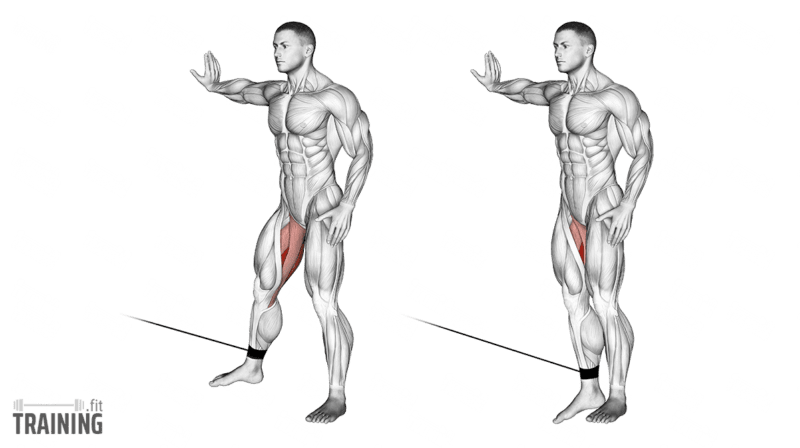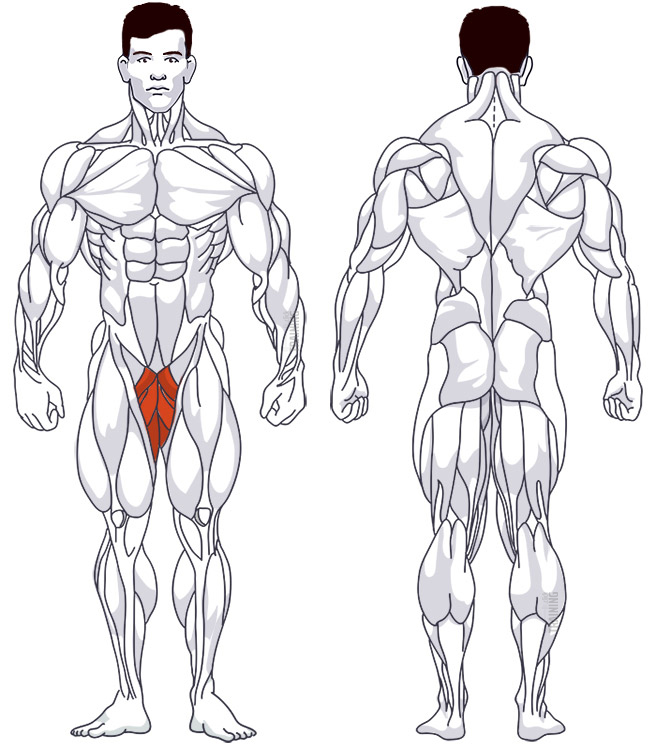Cable Hip Adduction
Isolation exercise, Cable pullOverview

Main muscles
- Thigh: Long adductor muscle
(Musculus adductor longus)
Training plans
Cable Hip Adduction is a suitable substitute for similar exercises in inner thigh training or as a supplement to various training plans.
Cable Hip Adduction: Basics and alternatives

Involved main muscle groups:
Cable Hip Adduction
The cable adductor exercise is a great way to target your inner thigh muscles, and it’s an excellent complement to the hip adduction machine exercise and side lunges. During this workout, you’ll stand beside a cable pull tower and move your leg, which is attached to a cable, inward to lift the weight.
To perform this exercise, you’ll need a cable pulley, an ankle strap, and some support for stability, particularly if you’re lifting heavy weights.
Correct Execution
For the best results, do this exercise in a cable pull tower, where you can hold onto the opposite side of the tower for a stable stance.
Video Tutorial
Step-by-Step Instructions
Stand sideways next to the cable pull tower and attach the foot strap to the lower cable.
Secure the strap around your ankle, adjust the weight, and keep in mind that since you’re working one leg at a time, you’ll need more body stabilization, so the weight should be less than half of what you’d use on an adductor machine.
Stand beside the cable pull tower, take a few steps to the side until the cable is taut but not lifting the weight, and make sure you can grab the opposite side of the tower. If necessary, extend the cable with an extension or chain.
Take another step to the side, extending the leg with the strap.
Stand tall, maintain body tension, and keep your exercising leg extended.
Slowly move your stretched foot, which is attached to the strap, towards your standing leg.
Your foot should pass in front of your standing leg for maximum range of motion.
Control your leg as you return to the starting position and repeat the movement. When you’ve finished with one leg, switch to the other and repeat. To avoid imbalances in your progress, perform the same number of repetitions on each leg, even if one is stronger.
Common Mistakes and Injuries
Make sure that the movement comes only from your upper leg at the hip, keeping your pelvis still and your knee straight to get the most out of the exercise.
If you’re making these mistakes, lower the weight, as performing the exercise correctly will yield better results than distorting the movement.